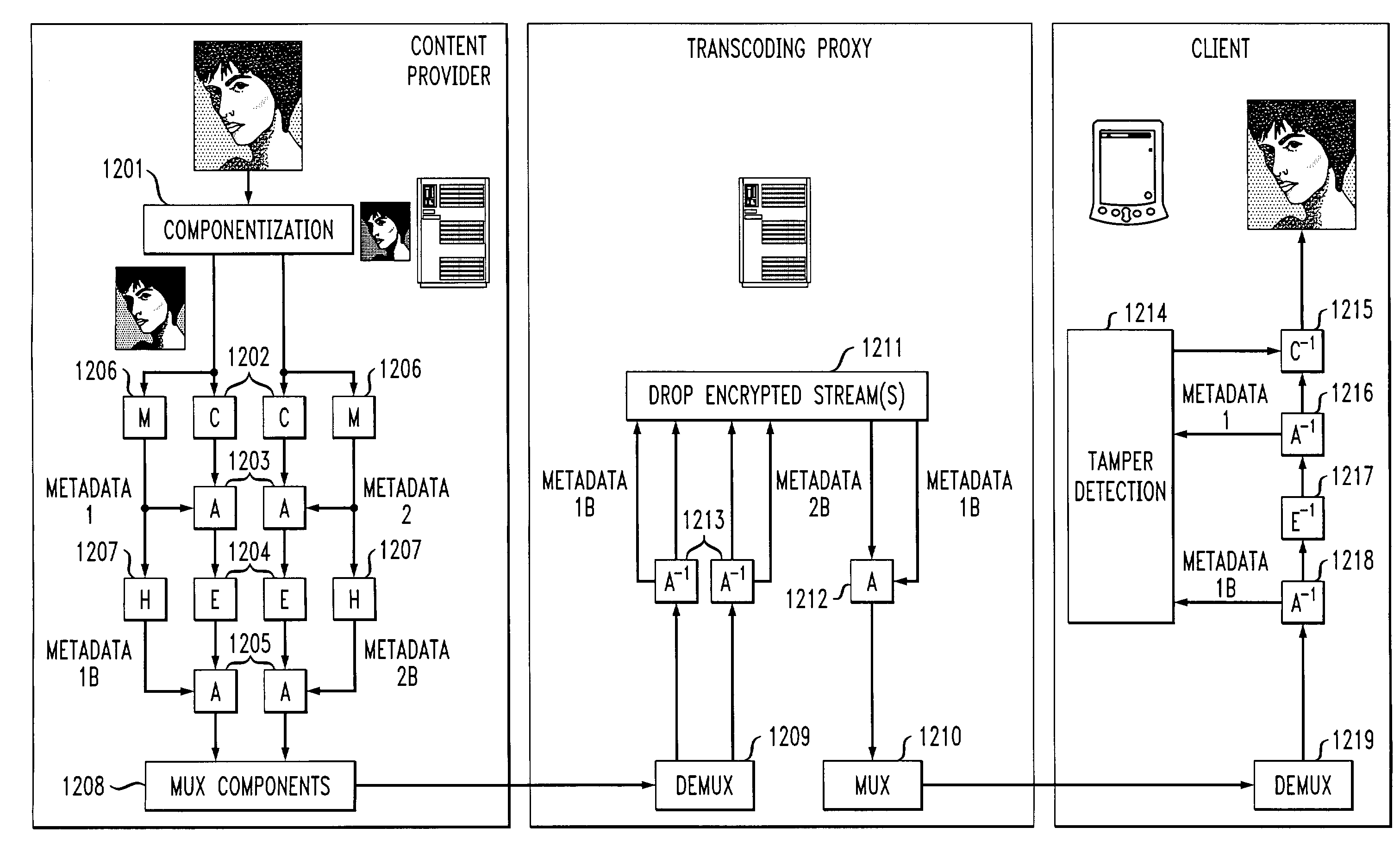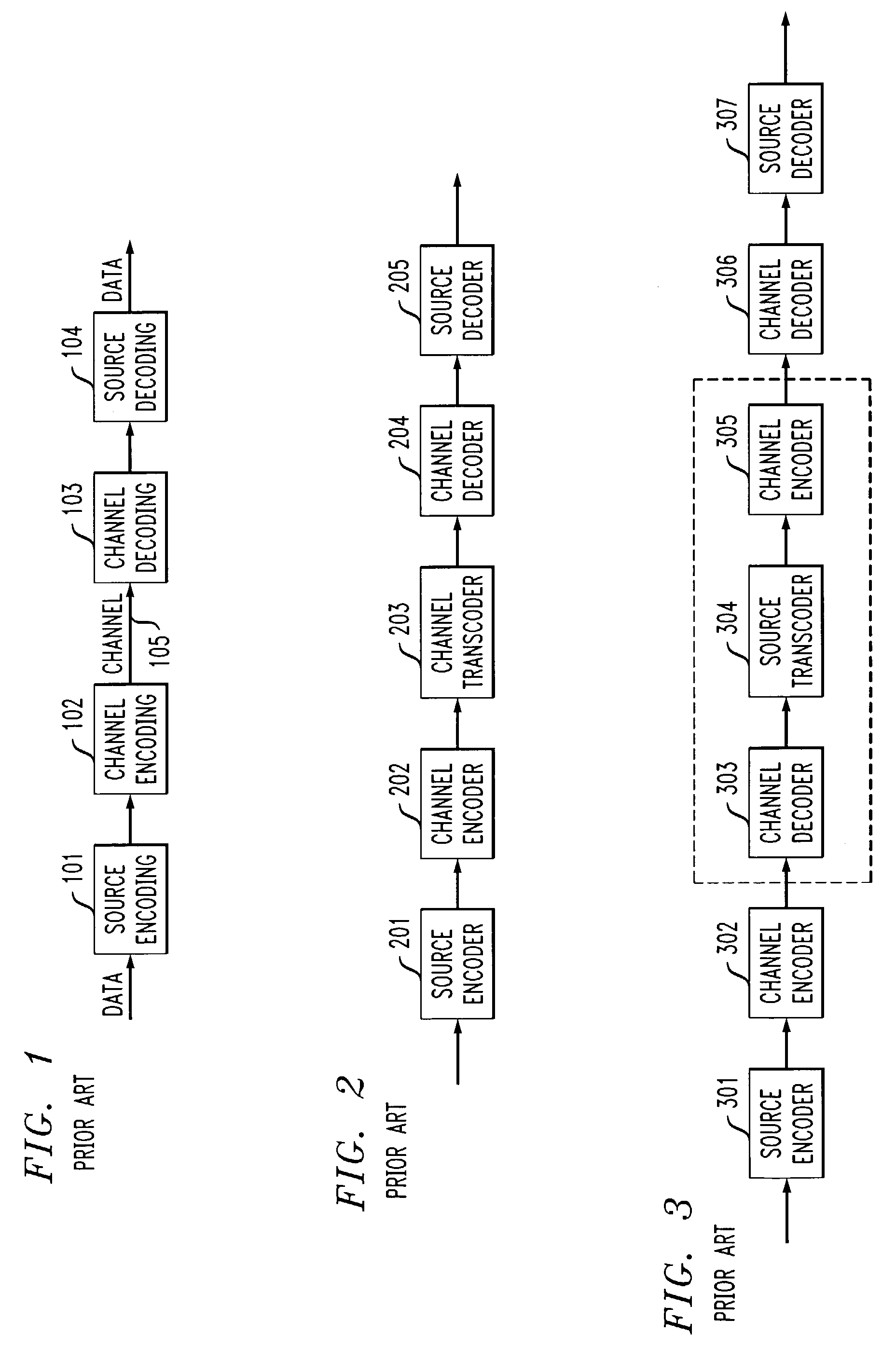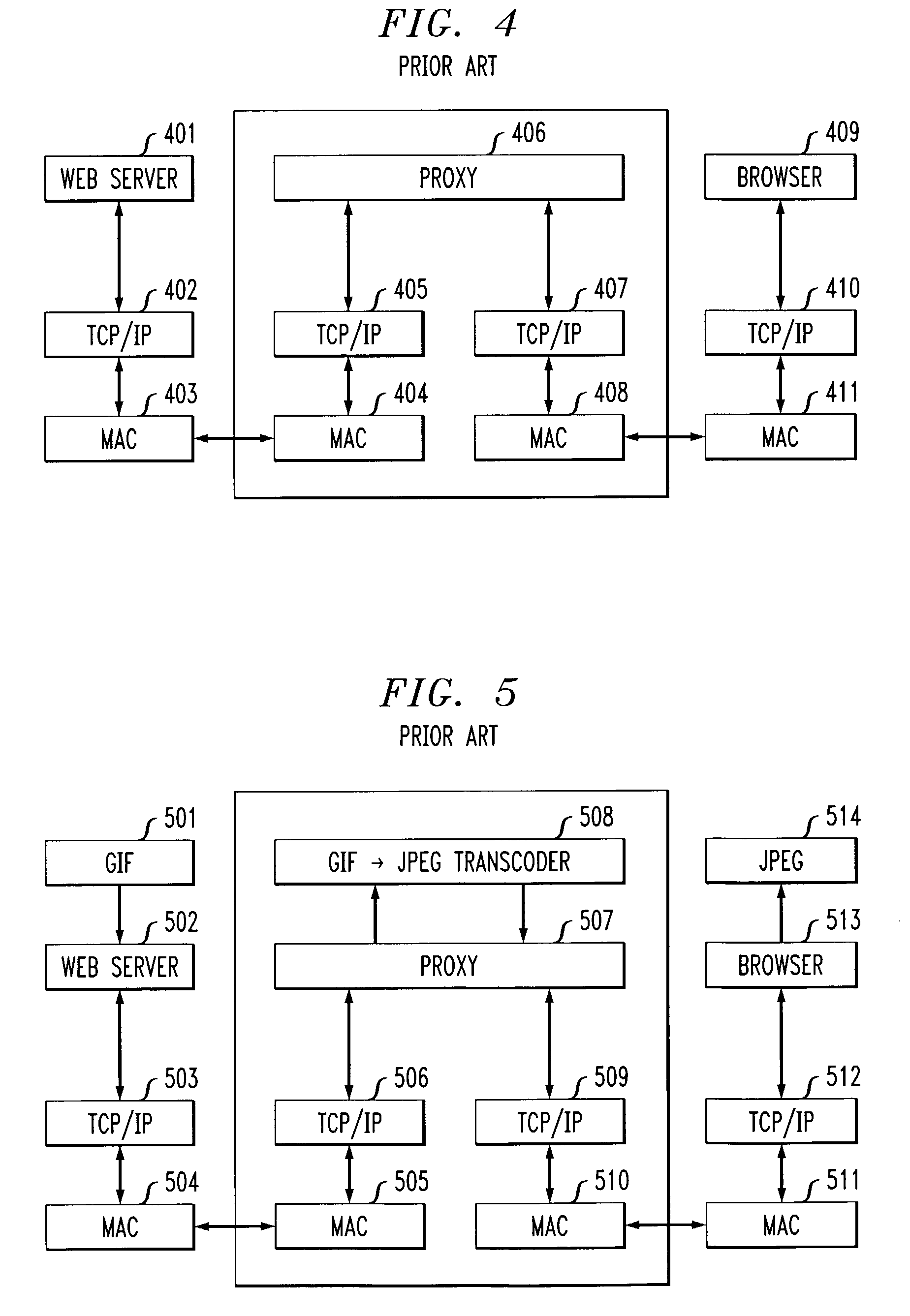Method and apparatus for networked information dissemination through secure transcoding
- Summary
- Abstract
- Description
- Claims
- Application Information
AI Technical Summary
Benefits of technology
Problems solved by technology
Method used
Image
Examples
Embodiment Construction
[0033]FIG. 1 depicts a communication system for encoding and decoding of data transmitted over a channel. As appreciated by those skilled in the art, the channel itself may be implemented in any known fashion, for example, as one or more dedicated data lines or wireless communication links, including cellular, satellite, microwave, or electromotive force (EMF) networks. In a typical communication process, the data sent by a data source or content provider will usually go through both source and channel encoding and decoding before the data reaches its destination (e.g., a user).
[0034]With reference to FIG. 1, source encoding 101 and decoding 104, in the general sense, refers to methods and apparatus for reducing or compressing the total amount of source data by exploiting any redundancy in the data. Various compression techniques are known in the art and may include, for example, lossless (e.g., run-length coding, Huffman coding, arithmetic coding, and LZ method used in the gzip com...
PUM
 Login to View More
Login to View More Abstract
Description
Claims
Application Information
 Login to View More
Login to View More - R&D
- Intellectual Property
- Life Sciences
- Materials
- Tech Scout
- Unparalleled Data Quality
- Higher Quality Content
- 60% Fewer Hallucinations
Browse by: Latest US Patents, China's latest patents, Technical Efficacy Thesaurus, Application Domain, Technology Topic, Popular Technical Reports.
© 2025 PatSnap. All rights reserved.Legal|Privacy policy|Modern Slavery Act Transparency Statement|Sitemap|About US| Contact US: help@patsnap.com



